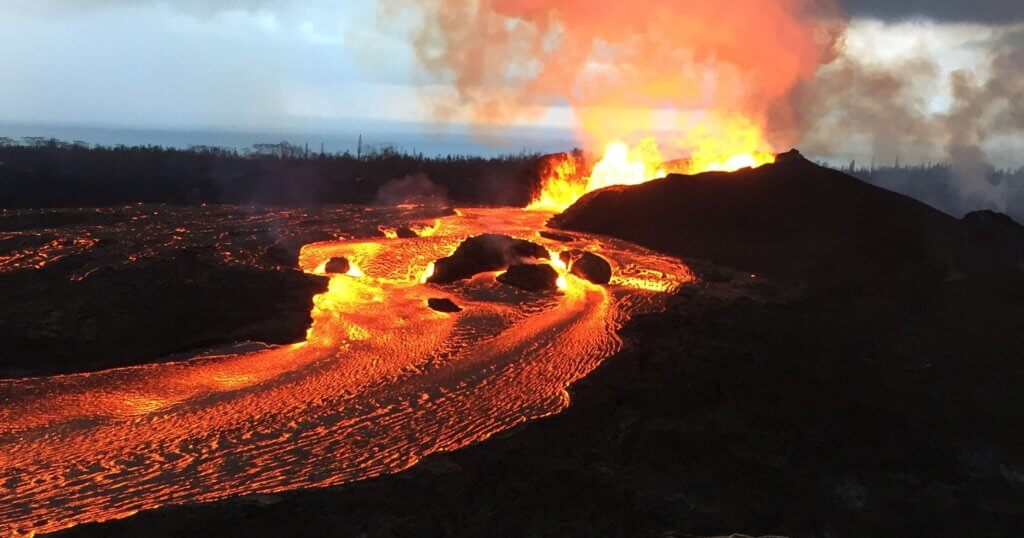The rock cycle is how rocks go down from Earth’s surface into a cycle that eventually brings them back up again. It is a very slow process that can take millions of years. There are 6 stages to the rock cycle:
- Weathering: Rocks are broken down by the weather: wind, rain, snow, hail etc.
- Carrying: The rocks are carried away by the wind, a river or stream.
- Settling: The rocks eventually settle as sand, mud or pebbles on the beach. These eventually get carried into the sea or river.
- Compacting: Rocks sink down to the bottom of the sea/river and get squashed. Over time, it hardens into solid sedimentary rock.
- Heating: Deep in the Earth, heat and high pressure sometimes changes the type of the rock. If it is very hot, both sedimentary and metamorphic rock can turn into magma.
- Volcanic: The magma goes onto the Earth’s surface through a volcano. It turns into solid, igneous rock.

Types of rock
There are 3 types of rock: sedimentary, metamorphic and igneous.
Sedimentary
Sedimentary rock is rock that is formed from broken-down materials, such as sand. Examples include sandstone, flint and chalk.
Metamorphic
Metamorphic rock is rock that has been formed from a combination of different rock types. In order to change, the rock would’ve had heat and pressure applied to it. Examples include slate and marble.
Igneous
Igneous rock forms whilst magma or lava is cooling and solidifying (turning into a solid.) Examples include granite and basalt.